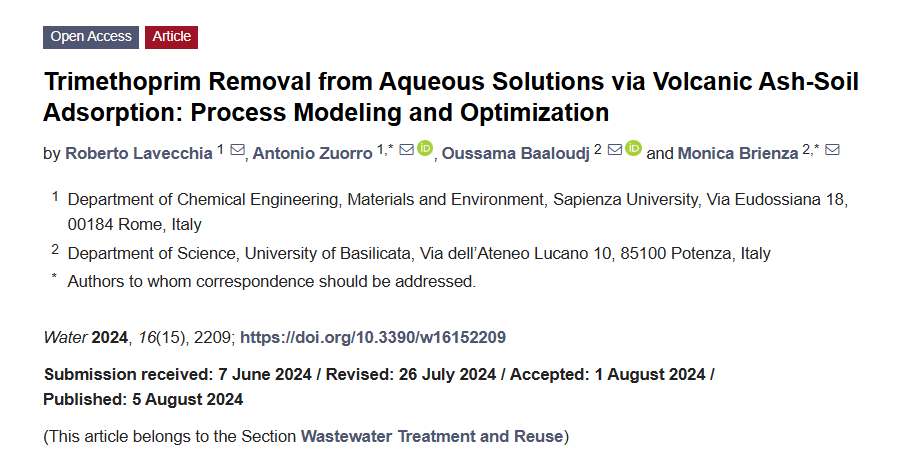
Within the framework of the PRIMA-SAFE project, a new study published in Water investigates the use of volcanic ash-derived soil (VADS) as a sustainable and cost-effective adsorbent for removing trimethoprim (TRM)—a commonly detected antibiotic in reclaimed water. The research also applies Response Surface Methodology (RSM) to model and optimize the removal process, addressing critical challenges in water reuse and pharmaceutical pollution.
Key Findings
- VADS achieved a maximum TRM removal efficiency of 77.6% under optimized conditions: 4.5 mg/L initial concentration, 45.5 min contact time, 747 rpm stirring speed, and 0.04 g/mL solid-to-liquid ratio.
- The adsorption process was accurately modeled and validated, with an average prediction error of just 3%.
- XRD analysis revealed that TRM adsorption induced mineralogical changes in the volcanic ash, confirming strong interactions through chemisorption.
- The proposed adsorption mechanism includes hydrogen bonding, π–π interactions, and metal-ligand complexation, involving key minerals such as forsterite and fayalite.
Implications
This study highlights the potential of natural volcanic materials in the development of eco-friendly water treatment technologies. The findings are particularly relevant for safe and efficient water reuse in agriculture, aligning with PRIMA-SAFE’s mission to enhance sustainability and reduce environmental risks across the Mediterranean region.
Reference
Lavecchia R., Zuorro A., Baaloudj O., Brienza M. (2024).
Trimethoprim Removal from Aqueous Solutions via Volcanic Ash-Soil Adsorption: Process Modeling and Optimization.
Water, 16(15), 2209.
DOI: 10.3390/w16152209

